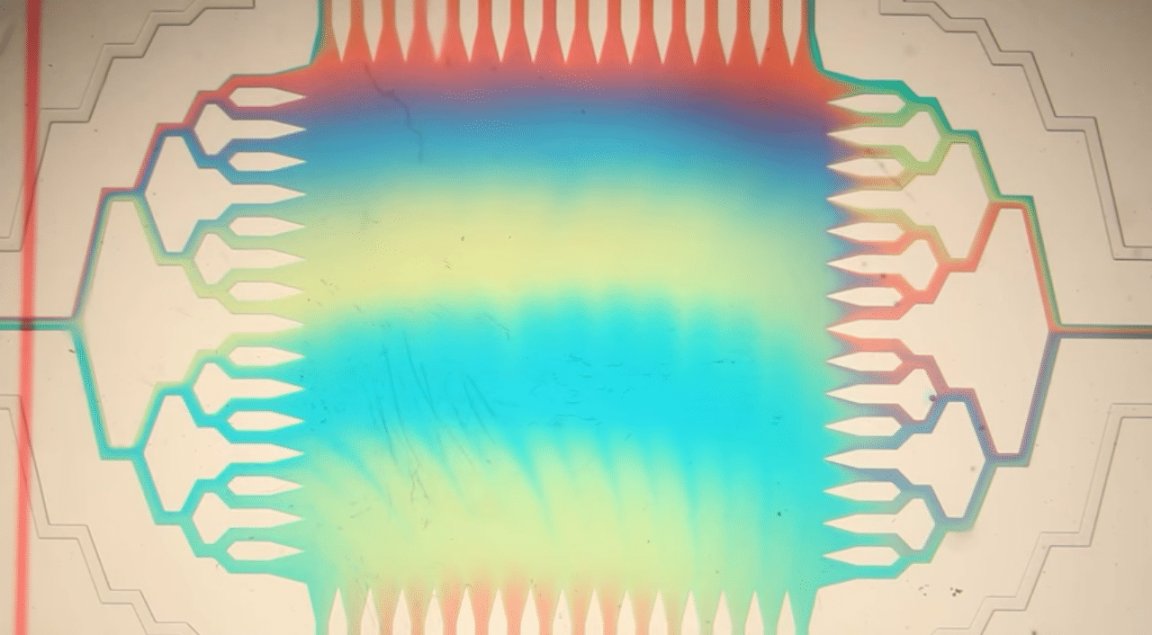
Mapping Trillions of Cells
Last month, we reported on the Human Cell Atlas, a project that plans to provide a detailed reference map of the human body’s trillions of cells. Yes, trillions. Once completed, the project could revolutionize healthcare by giving doctors and researchers a better way to predict, diagnose, and treat diseases.
Initiatives like this need funding – so Facebook billionaire Mark Zuckerberg opened his wallet and founded BioHub, a $600 million center that will focus on helping create a human cell directory. Zuckerberg and his wife, Priscilla Chan, plan to give away $3 billion over 10 years to fight disease, and BioHub is the couple’s first initiative.
Stephen Quake, co-president of BioHub, is part of a consortium of researchers around the globe that have made the atlas project possible, thanks to his inventions that allow researchers to move individual cells around channels on microfluidic chips. In this way, scientists can isolate cells inside bubbles of liquid so that they can be analyzed individually.
“BioHub is still very small scale compared to what is needed to make progress,” he says. “It’s going to take an international effort of huge magnitude.”
Quake says that the BioHub—which will also hand out grants to researchers at Stanford, the University of California, Berkeley, and the University of California—wants to further develop technologies that would let scientists analyze cells and their molecular contents directly in samples of tissue.
Quake is also part of the Human Cell Atlas Consortium, which is led by Regev and Sara Teichmann of Britain’s Sanger Institute. “It’s starting to take shape,” says Quake. “I think 2017 is going to be a big year for the cell atlas.”
The Biohub will immediately initiate two potentially transformative research projects to be conducted over the next five years: the Cell Atlas and the Infectious Disease Initiative.
- The Cell Atlas will be a map made available to researchers around the world that reveals the many different types of cells that control the body’s major organs, such as the brain, heart, breast, and lungs. The Cell Atlas will also depict the internal machinery of cells in unprecedented detail, allowing scientists to search for the basic breakdowns that occur within cells when disease strikes.
- The Infectious Disease Initiative will explore new ways to create drugs, diagnostic tests, and vaccines to fight against the many infectious diseases that still threaten much of the world—like HIV, Ebola, and Zika. The initiative will include a Rapid Response Team that can immediately devote world-class scientists and advanced research technology to develop new ways to fight a sudden outbreak.=
A New Era in Cells
What scientists want to do now is inspect tens of millions of human cells for their molecular signatures and also locate each type in the body. That sort of map could be useful to scientists or drugmakers who might, for instance, look up which cells a new drug is likely to affect. Cataloging how the immune system changes and adapts to fight tumors could be the source of the next insights for cancer treatments.
One approach ready for massive-scale data production involves detecting which proteins an individual cell is trying to manufacture. The readout, which acts as a molecular fingerprint, has already led to the discovery of new cell types in the retina and brain. A method developed by Macosko has helped bring the cost down to only 17 cents per cell.
Relying on that technique, Aviv Regev, deputy director of the Broad Institute in Cambridge, Massachusetts, circulated a proposal to donors to catalog 50 million cells over five years at a cost of $100 million.
That way, they wouldn’t just produce a census of cell types, but a true map of how the body’s 20 trillion cells fit together. One new chemical technique, for instance, can turn a dead mouse entirely transparent (and therefore visible to microscopes).